Part Analysis
| General Data | |
| Manufacturer (OEM) | Great Wall |
| PCB Type | Double-Sided |
| Primary Side | |
| Transient Filter | 2x Y caps, 2x X caps, 2x CM chokes, 1x MOV |
| Inrush Protection | 1x NTC Thermistor SCK-056 (5 Ohm) & Relay |
| Bridge Rectifier(s) |
2x Diodes GBU25KH (800V, 25A @ 175°C)
|
| APFC MOSFETs |
1x Infineon IPW60R060C7 (650V, 22A @ 100°C, Rds(on): 0.060Ohm) |
| APFC Boost Diode |
1x Cree C3D08060A (600V, 8A @ 150°C)
|
| Bulk Cap(s) |
1x Rubycon (420V, 470uF, 3,000h @ 105°C, MXK)
|
| Main Switchers |
2x Rohm R6035VNX3 (600V, 35A @ 25°C, Rds(on): 0.119Ohm)
|
| Driver IC | 1x NOVOSENSE NSi6602BD |
| APFC Controller | Champion CM6502UHHX |
| Resonant Controller | Champion CM6901X |
| Topology |
Primary side: APFC, Half-Bridge & LLC converter
Secondary side: Synchronous Rectification & DC-DC converters |
| Secondary Side | |
| +12V MOSFETs | 4x Infineon BSC014N04LS6 (40V, 125A @ 100°C, Rds(on): 1.4mOhm) |
| 5V & 3.3V | DC-DC Converters: 4x Advanced Power AP4024GEMT (30V, 60A, Rds(on): 4.5mOhm) PWM Controller(s): ANPEC APW7159C |
| Filtering Capacitors | Electrolytic: 2x Rubycon (3-6,000h @ 105°C, YXG), Polymer: 39x FPCAP |
| Supervisor IC | IN1S429I-SCG (OCP, OVP, UVP, SCP, PG) |
| Fan Controller | Microchip PIC16F1824 |
| Fan Model | Corsair NR092P (92mm, 12V, 0.22A, Fluid Dynamic Bearing Fan) |
| 5VSB Circuit | |
| Rectifier(s) |
1x Infineon ICE5QR1680AG (800V, 5.8A, Rds(on): 1.75Ohm)
|
| Standby PWM Controller | Infineon ICE5QR1680AG |
Great Wall is the OEM of all SF and SF-L units. It is a Chinese government-owned company, so it has plenty of resources. The PCB is small and densely populated with components to deliver 750W max power. The primary heatsink, hosting, among other things, the bridge rectifiers, is pretty large, while the heatsink on the secondary side is small since the FETs that regulate the 12V rail are installed on the PCB’s bottom side. Overall, the build quality is high, with expensive parts and nearly impeccable soldering quality. Great Wall has state-of-the-art production lines, so I didn’t expect anything less in soldering quality. I had the chance to visit all of GW’s factories and production lines in 2023, and the production of the new SF line took place at the time of my visit.
The design is typically found in every modern PSU nowadays. A half-bridge topology on the primary side, after the APFC converter’s stage, while an LLC resonant converter boosts efficiency through an (almost) lossless switching. On the secondary side, a synchronous rectification scheme, including four (instead of the six that the 850W uses) Infineon FETs, regulates the 12V rail. The minor rails are generated from a pair of DC-DC converters utilizing an ANPEC PWM controller. Rubycon provides the few electrolytic caps on the secondary side, while many polymer caps handle ripple filtering. The fan controller is a Microchip digital controller, making the fan speed profile programming easy. The cooling fan uses a fluid dynamic bearing and has a diameter of 92mm. Lastly, the standby circuit uses Infineon parts.
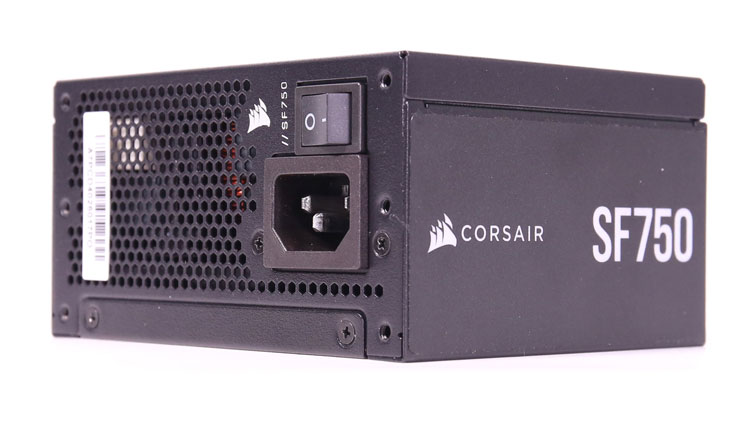
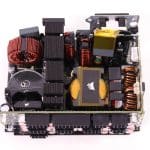
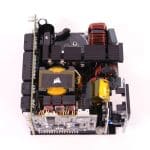
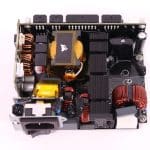
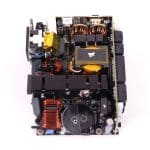
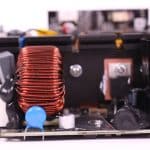
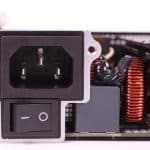
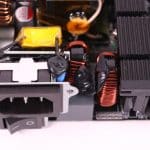
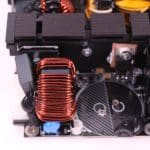
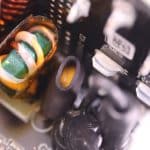
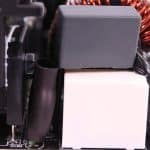
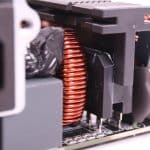
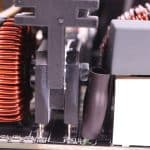

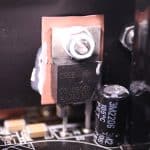
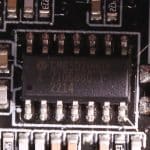
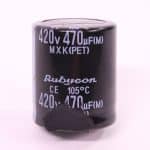
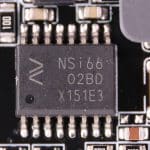
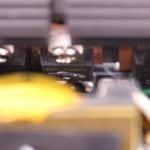
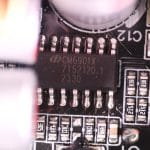
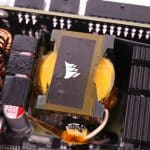


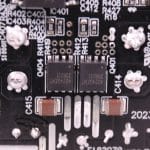

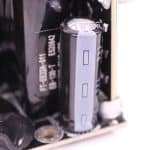

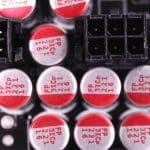
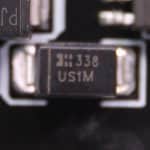
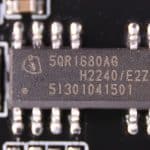
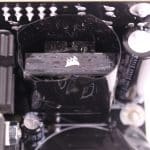

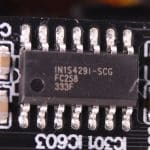
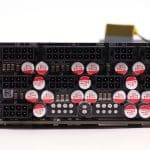
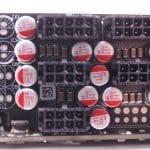

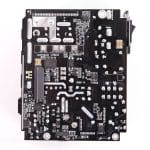
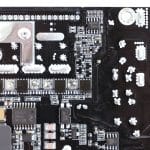
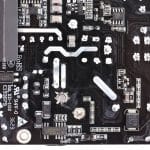
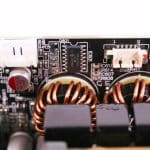
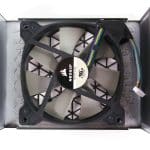


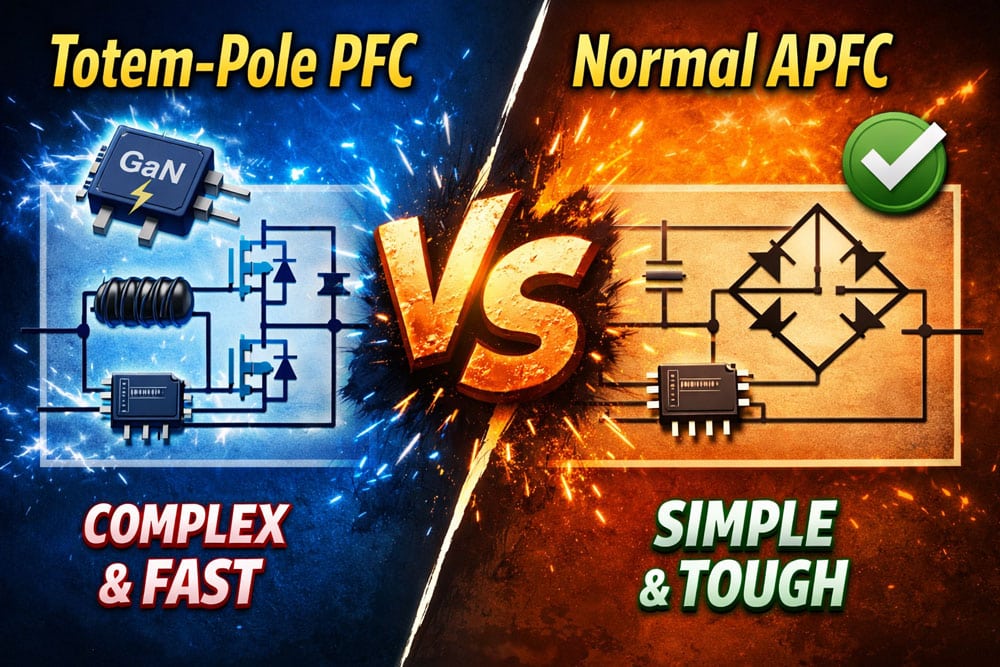
Hello,
For battery backup do you think it matter if is a Simulated Sine Wave or it need to be True Sine Wave power supply.
Trying to decide which version to get as I don’t understand at what testing data to look to decide.
Thanks
most PSUs I tried don’t have a problem with simulated sine wave as long as you only need the UPS to hold for a small period to shut down your PC.
That good to know.
Is for a 810W I saw that is supposed to run for 10minutes half load and I guess the PC would be using 400-450watts.
So 2-5 minutes to shut it off should be safe then.
Thanks
What do you mean by “Micro Fit” connectors? As I am only seeing mini fit Jr connectors on this psu?
Corsair switched to micro fit connectors on the 2024 SF line. It’s hard to tell from a single photo, but look at how much less space the connectors take up compared to older versions of the SF line.
I do apologise, there’s not much information right now but for clarity, the landing page for the updated sfx psus state as such…
sf750 – 2x pice 8 pin cables
sf850 – 3x pice 8 pin cables
sf1000 – 4x pice 8 pin cables
Can you confirm that the new sf750 actually does include 3x pice 8 pin cables?
This is a concern for me.
It has two 6+2 pin cables, as I have in the cable description table, and one 12+2 pin.
I found that there was a typo in the general specs list, fixed it.
Can confirm my retail unit comes with only 2 x 8(6+2)pin cables, and that cables are singular they don’t have pigtails like the old unit. If you need more than two 8pin for your GPU like for higher end factory overclocked RX 7000 units you need to get SF850.
Personal opinion: even in the old unit those pigtails power generally doesn’t provide good enough power for long term use and also it is generally accepted convention to not using pigtails for powering many pinned GPU. I guess corsair can get a pass not providing pigtails this generation as it will reduce user error and we are moving forward to using new 12V-2×6 standards anyway (side note: these new SF cables are very good and flexible even better than the old generation, this is especially valuable for SFF build with tight cable management restriction)